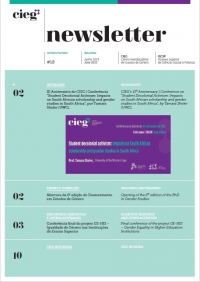The project’s “Media Representations of Sensitive Publics” main goal is to understand how and to what level are the so-called sensitive publics represented in the news, under a gender lens.
Sensitive publics, according to ERC – Portuguese Regulatory Social Communication Entity are those who find, by reasons of political, economic or social order, by cognitive inabilities or by physical vulnerabilities, difficulty in accessing public space and fully exert their citizenship. In this project, we include the groups mentioned by ERC: a) children and youngsters, b) elderly people, c) ethnical minorities. We also include three other publics, namely: d) LGBT communities; e) persons with disabilities and f) women. Although not a minority, we included this last one because it is important to understand whether their growing participation in public life is reflected in the importance given to them in the news and how the generic idea of gender equality is promoted.
Since the 1990’s, studies have been revealing gendered stereotyped representations of minorities, especially when media privileges a negative factuality regarding those groups or denies them visibility. This leads to generalization of minorities representations in Public Opinion, which is also due to a predominance of news that appeal to influential and political sources, reproducing only one voice in the media. We particularly apply intersectionality theory to analyse gender representations of these groups. Departing from the premise that media representations may contribute to social constructions of mentioned publics, we conduct a quantitative content analysis of main media voices and groups visibility.
In order to accomplish this, we characterize news relevance of the different publics; understand how people and its characteristics are depicted in the news, as agents, sources and by sex; verify which voices are representing public interests; assess the positive or negative value in the news regarding different publics in gender terms; identify the visibility of each public. Print media was chosen because it keeps its greater agenda setting effect within its audiences and because it provides greater contextualization and depth, despite the exponential growing consumption of digital media. Our sample is now of over 30.000 news items from major print media in Portugal, including daily (Diário de Notícias, Jornal de Notícias, Correio da Manhã and Público) and weekly (Expresso and Sol) newspapers and information magazines (Sábado and Visão) from January to June of each year since 2014. In the field of gender studies, a greater and better knowledge of gendered media representations of sensitive publics as social constructs enables rethinking public policies and academic positions.
The project has as external advisor Dr. Martina Topić, Senior Lecturer in Public Relations in Leeds Business School (Leeds Beckett University). You can find Dr. Martina Topić's CV here.
Maria João Cunha is one of the team's members.

